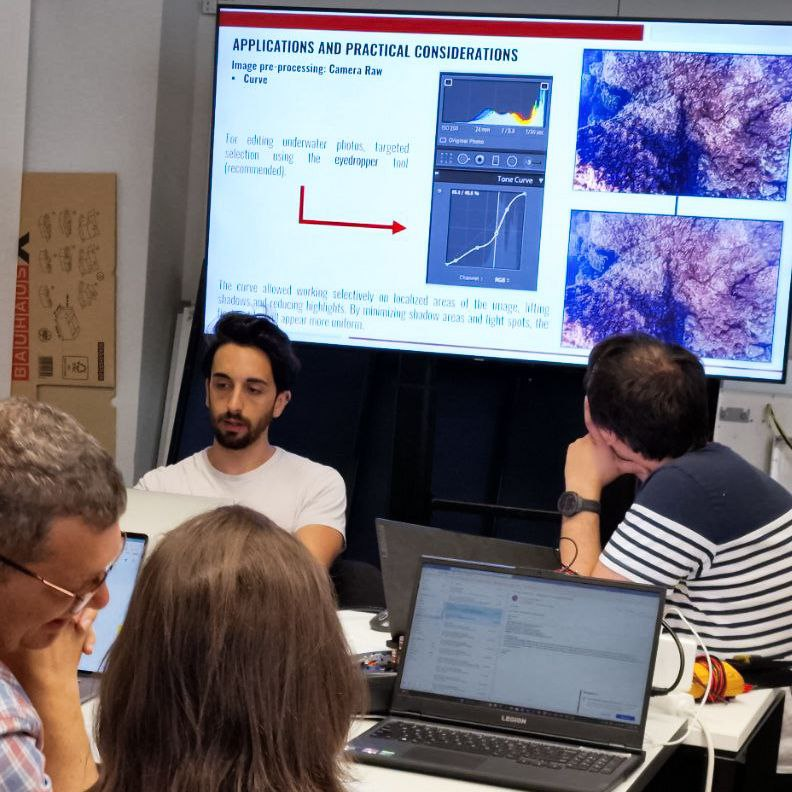Umberto Severino, a secondee from UNICAL, held a brief seminar at the LABUST laboratory (FER, University of Zagreb) on technologies for underwater survey. Subsequently, he conducted a workshop on the workflow for reconstructing a three-dimensional scene in the context of underwater cultural heritage (UCH) sites. The seminar focused on typical technologies such as sonar, cameras, and sampling probes for surveying, with a particular emphasis on optical systems. These technologies are particularly valuable for monitoring, documenting, and preserving archaeological sites as they provide high-quality data that are easily understandable for both professionals and individuals without a scientific background, while allowing non-destructive measurements.
During the seminar, Umberto discussed the main advantages and drawbacks of active and passive optical systems. He then focused on the pre-processing of underwater image datasets before the structure-from-motion (SfM) reconstruction process. Considering the challenges encountered in the underwater environment, such as light absorption, color wavelength loss, blurring, and backscattering phenomena, appropriate image filtering is necessary to improve the semantic content of the acquired scene. Modern image processing software is used to pre-process the images, preparing them for three-dimensional scene reconstruction. Following the image filtering process, the 3D scene is processed, taking into consideration the model size and geographic references for model georeferencing.
Thanks to the knowledge transfer activities provided by the TECTONIC project, Umberto was able to share his professional experience with the staff and collaborators of H2O Robotics and LABUST at the FER, University of Zagreb.



Leave a Reply